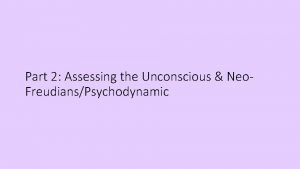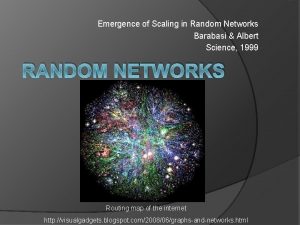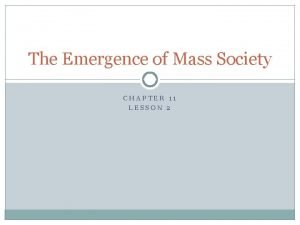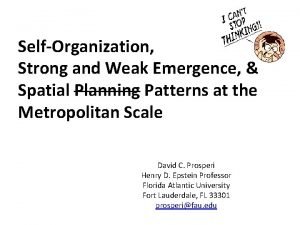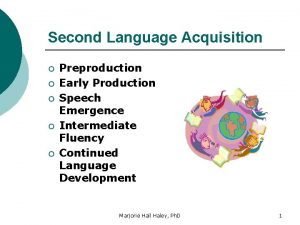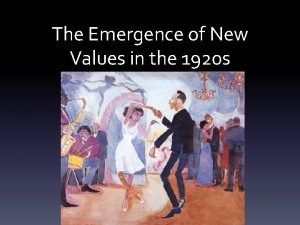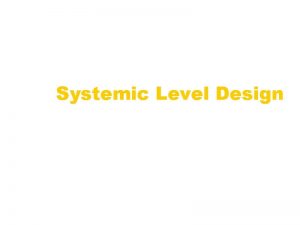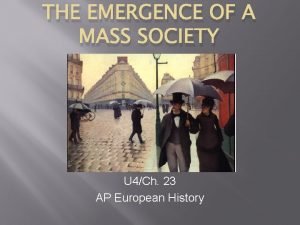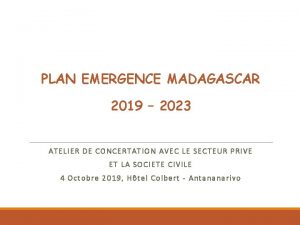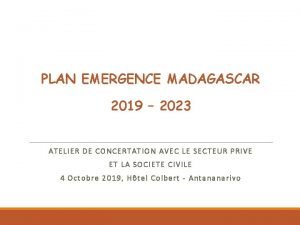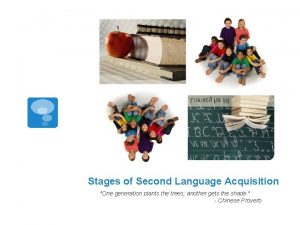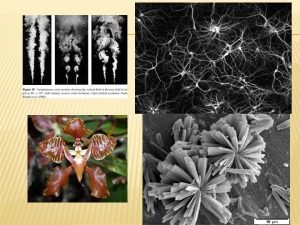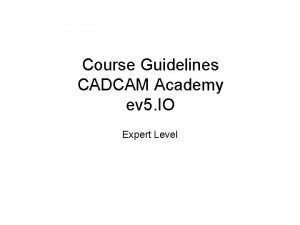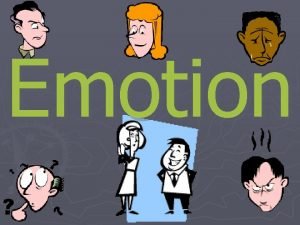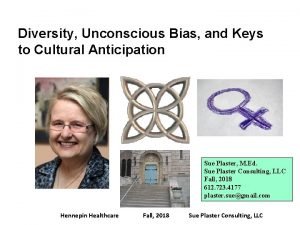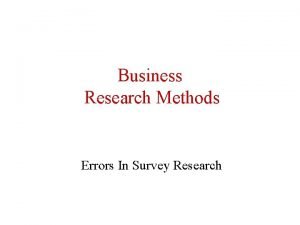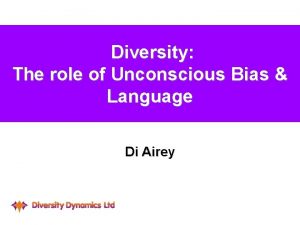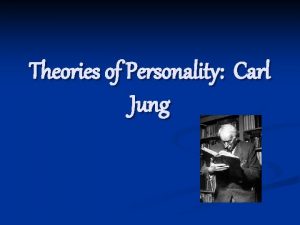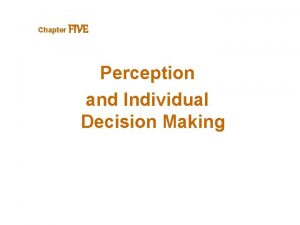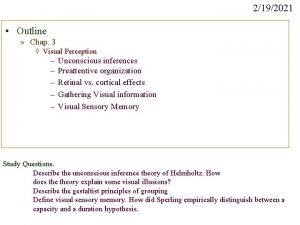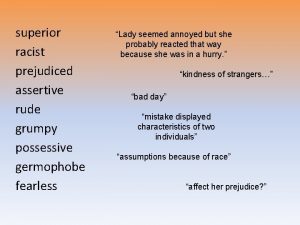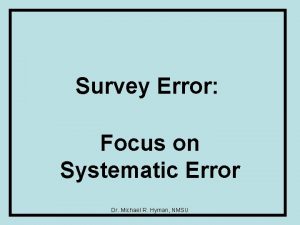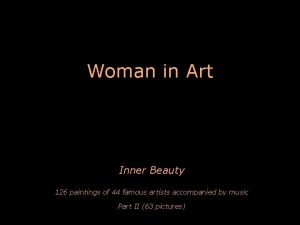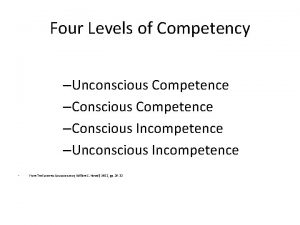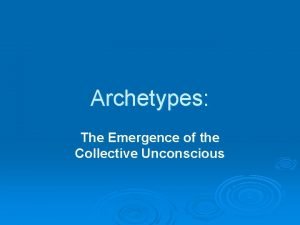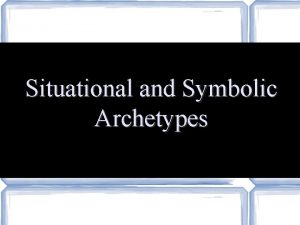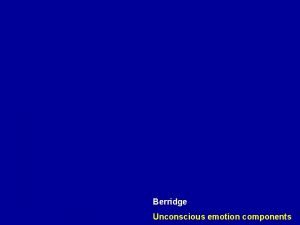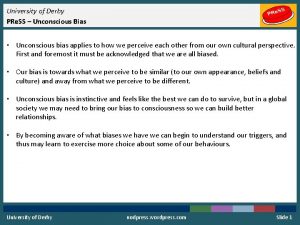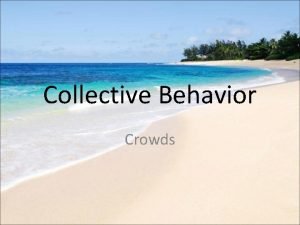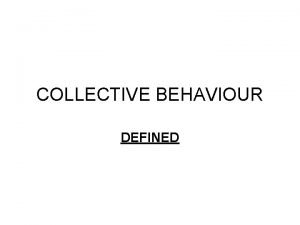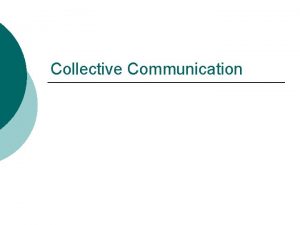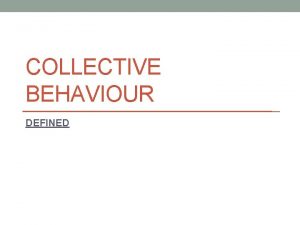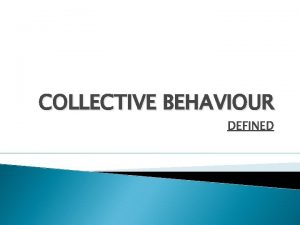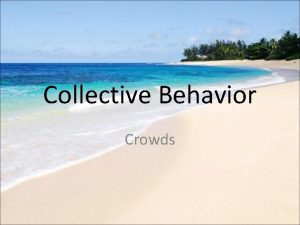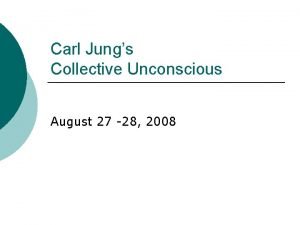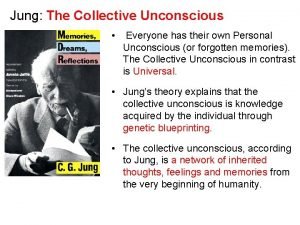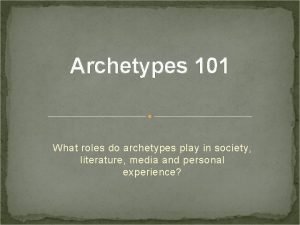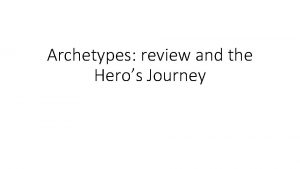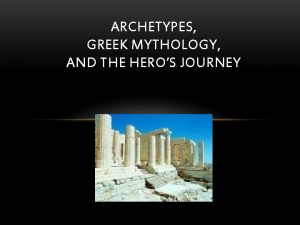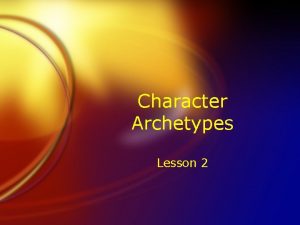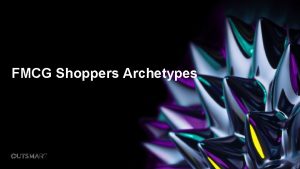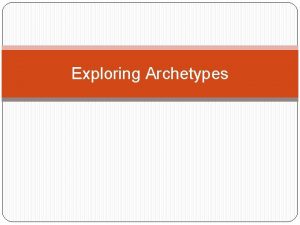Archetypes The Emergence of the Collective Unconscious Archetypes


































- Slides: 34

Archetypes: The Emergence of the Collective Unconscious

Archetypes Ø Recurring patterns of situations, characters, or symbols existing universally and instinctively among different cultures.

Situational Archetypes Ø Quest: search for someone or something which when brought back will restore health to the people or land

Situational Archetypes Ø Task: what a hero must do to save the land, win the fair lady, prove one’s rightful place

Situational Archetypes Ø The Initiation: rite of passage to signify adulthood

Situational Archetypes Ø The Journey: A hero goes in search of truth or information to save the people or land; usually he/she descends into a real or psychological hell to discover the truth

Situational Archetypes Ø The Fall: descent from a high to low state of being which involves a loss of innocence; often characters are rejected

Situational Archetypes Ø Death and Rebirth: common to show the duality of the cycle of life and death, spring and winter

Situational Archetypes Ø Nature vs. Mechanistic World: natural order or nature is good; technology separates people from nature and is bad

Situational Archetypes Ø Battle between Good and Evil: future of the world at stake as the two opposing forces battle

Situational Archetypes Ø Unhealable Wound: either real or psychological that cannot fully heal.

Situational Archetype Ø The Ritual: ceremonies that mark rite of passage (e. g. princess becomes a queen)

Situational Archetypes Ø The Magic Weapon: symbolizes extraordinary quality of the hero, no one else can wield the weapon

Symbolic Archetypes Ø Light vs. Darkness: light usually means hope or renewal, while darkness is ignorance and despair

Symbolic Archetypes Ø Water vs. Desert: water is birth or cleansing, while desert is a place of exile

Symbolic Archetypes Ø Heaven vs. Hell: skies and mountains belong to the gods; the bowels and pits of the world hide evil

Symbolic Archetypes Ø Innate Wisdom vs. Educated Stupidity: instinctive intelligence vs. book learned ignorance; book smarts vs. street smarts

Symbolic Archetypes Ø Haven vs. Wilderness: places of safety vs. dangerous wild places

Symbolic Archetypes Ø Supernatural Intervention: gods intervene to help the hero

Symbolic Archetypes Ø Fire vs. Ice: fire is light, rebirth, knowledge; ice is darkness, ignorance, death

Character Archetypes Ø Hero/Heroine: some of the following must be present in the life of a hero: Ø Mother is pure Ø An attempt is made to kill mother or child Ø Raised by foster parents Ø (Male) proves himself, becomes king. (Female) has special powers, becomes warrior or spiritual leader Ø Falls from favor with gods Ø Becomes outcast Ø Upon death, body not buried

Character Archetypes Ø Young one from provinces: hero leaves kingdom and raised by strangers, later returns and saves kingdom

Character Archetypes Ø The Herald: calls hero to action, can be a person, event, or object

Character Archetypes Ø The Initiate(s): hero goes through training

Character Archetypes Ø Mentor/pupil relationship: teachers to the student (hero); teaches hero how to survive the quest/task

Character Archetypes Ø Parent/Child Conflict: usually results from early separation of hero from parent; greater attachment to mentor

Character Archetypes Ø Hunting group of companions: band of loyal friends willing to battle together to achieve a common goal

Character Archetypes Ø Loyal Retainers: side-kicks to the hero/heroine; duty is to protect the hero

Character Archetypes Ø Friendly Beast: animals that aid hero and symbolize how nature is on the hero’s side

Character Archetypes Ø The Devil Figure: character is evil incarnate; offers worldly goods for the hero’s soul

Character Archetypes Ø Evil Figure with Ultimately Good Heart: saved by love of the hero

Character Archetypes Ø The Outcast: figure banished from society for a crime (real or imagined); wanders from place to place

Character Archetypes Ø Creature of Nightmare: horrible monster that threatens the life of the hero and is a perversion of the human body

Character Archetypes Ø Earth Mother: spiritual & emotional health Ø The Temptress: brings downfall of hero Ø The Platonic Ideal: inspires, smart but no sex appeal Ø The Damsel in Distress: vulnerable, needs to be saved, trapped by devil figure Ø The Star Crossed Lovers: love affair fated to end tragically
 Carl jung archetypes
Carl jung archetypes Neo psychoanalytic theory
Neo psychoanalytic theory Emergence of scaling in random networks
Emergence of scaling in random networks Entrepreneurship during post independence
Entrepreneurship during post independence Lesson 2 the emergence of mass society
Lesson 2 the emergence of mass society Landmarks in emergence of corporate governance
Landmarks in emergence of corporate governance So&e
So&e Speech emergence
Speech emergence The emergence of new values
The emergence of new values Ion storm
Ion storm The emergence of mass society
The emergence of mass society Plan emergence madagascar 2019-2023 pdf
Plan emergence madagascar 2019-2023 pdf Plan emergence madagascar 2019-2023 pdf
Plan emergence madagascar 2019-2023 pdf Stages of second language development
Stages of second language development Netflix core competencies
Netflix core competencies Emergence theory
Emergence theory Emergence profile
Emergence profile 10 primary emotions carroll izard
10 primary emotions carroll izard Unconscious bias questions
Unconscious bias questions Unconscious bias icebreaker
Unconscious bias icebreaker Auspices bias example
Auspices bias example Unconscious vs conscious proprioception
Unconscious vs conscious proprioception Unconscious bias and language
Unconscious bias and language Carl jung theory of personality
Carl jung theory of personality Is an unconscious process created from distilled experience
Is an unconscious process created from distilled experience The electra complex
The electra complex Unconscious inferences
Unconscious inferences Amber nova unconscious
Amber nova unconscious Unconscious patronization
Unconscious patronization Auspices bias
Auspices bias The electra complex
The electra complex Circe offering the cup to ulysses
Circe offering the cup to ulysses Conscious incompetence
Conscious incompetence Unconscious proprioception
Unconscious proprioception Freud unconscious mind
Freud unconscious mind

